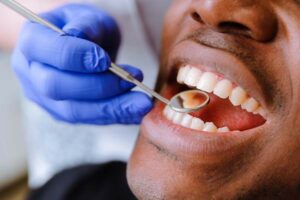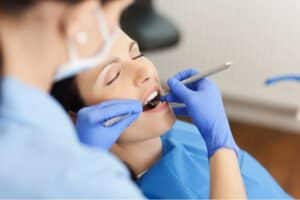A dental implant is a safe and predictable procedure when planned with the right imaging technology. However, there are times when unforeseeable factors may cause implant failure. This is not common but nonetheless possible. At our dental clinic, we take all necessary precautions to avoid this possibility especially because we are unable to give regular checkups to patients living outside the country to verify that implant integration is taking place correctly. Thanks to this, we have a high success rate on our dental implants. If you are one of the few that experience a failure, here is what you need to know.
When the implant is surgically placed on your upper or lower jaw, bone cells start to grow around the threads and soon harden into bone. This process, called osseointegration, takes 4-5 months. As this happens, the implant literally becomes integrated into your body and your jawbone lends it support. If this process does not happen as it should, the implant will present problems afterward. Factors related to the inhibition of integration are osteoporosis, heavy smoking, allergies, or downright rejection from the body. Most of the time, this type of failure is painless.
There are other times when the implant fails once it has been integrated, torqued, and restored. This kind of failure is related to a condition known to dentists as peri-implantitis. This is caused by bacteria that creeps into the bone and create either heavy bone loss or infection around the implant. These infections tend to be painful and involve signs like heat, drainage, or swelling. Other failure factors include trauma caused by bruxism or gum disease caused by poor oral hygiene. Again, osteoporosis, some medications, and heavy smoking wear away the bone and may cause failures long after the implant has been restored.
Remember your implants are fixed on hard bone and they should not move at all. You will know when your implant needs attention if you notice mobility on any of the implant parts when you talk or chew. Sometimes the implant will come out on its own, but more often you must go to your dentist to get it removed. Failed implants will easily come out with local anesthesia. In cases of infection, the surgeon will remove the implant and clean the area. He will restore the bone density with graft and evaluate the possibility to immediately replace the implant. If this is not possible, the graft will take 5-6 months to integrate and you´ll be ready to give your implant a second try. Do not worry; implant replacements are usually covered by the surgeon´s warranty, but be sure to ask about the terms.
There are ways to avoid implant complications. Inform your dentist about your medical history and any medications. Ask him, based on this, if there are any risks prior to your implant surgery. Decrease the use of tobacco and follow a thorough daily cleaning routine.
At the Costa Rica Dental Team, we place hundreds of implants each year with a 97-98 percent success rate. If you feel you are having any issue with your implants or if you have any questions about them, please contact us now for help.




